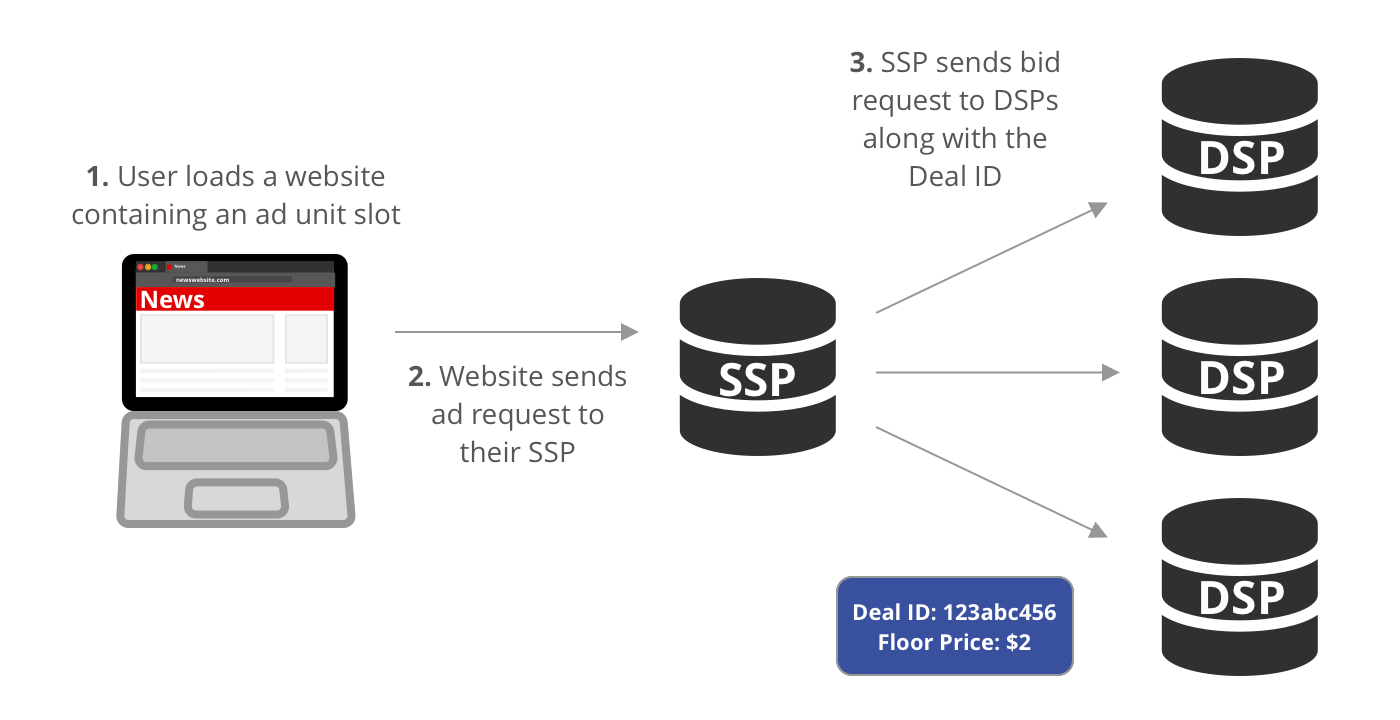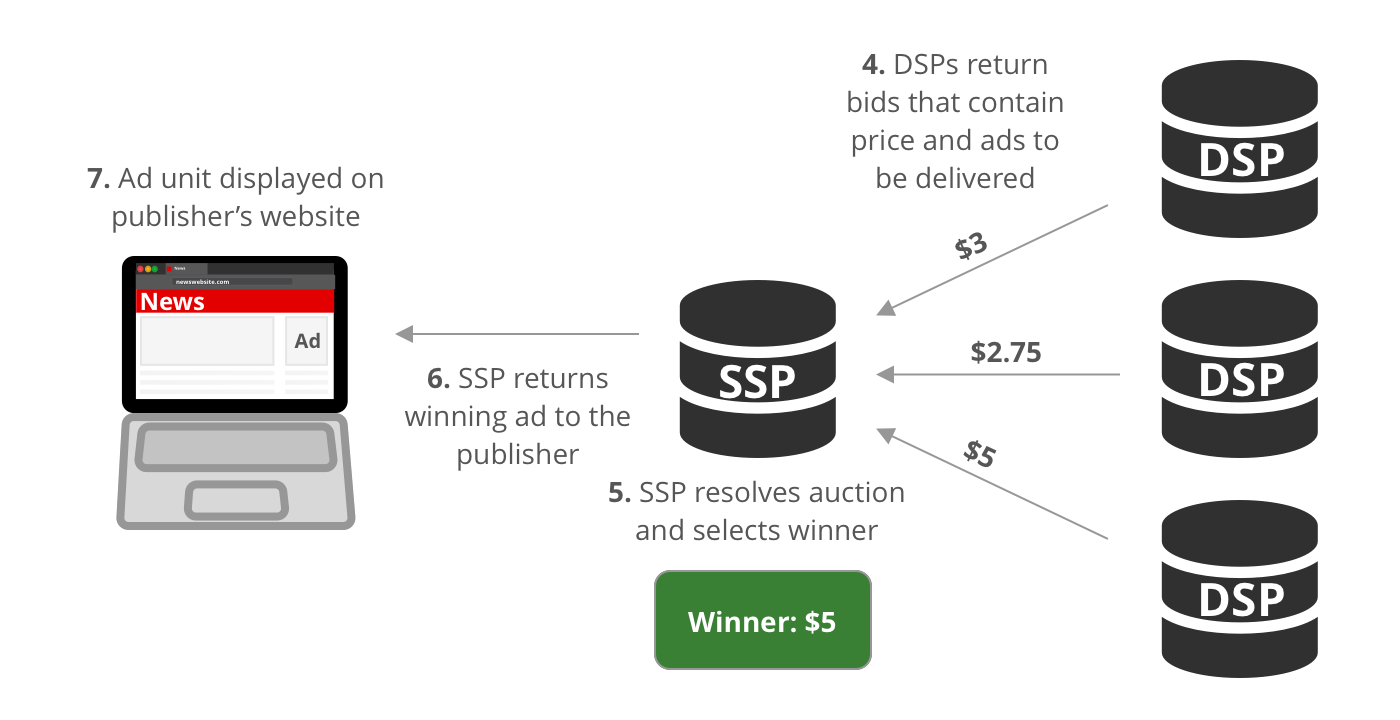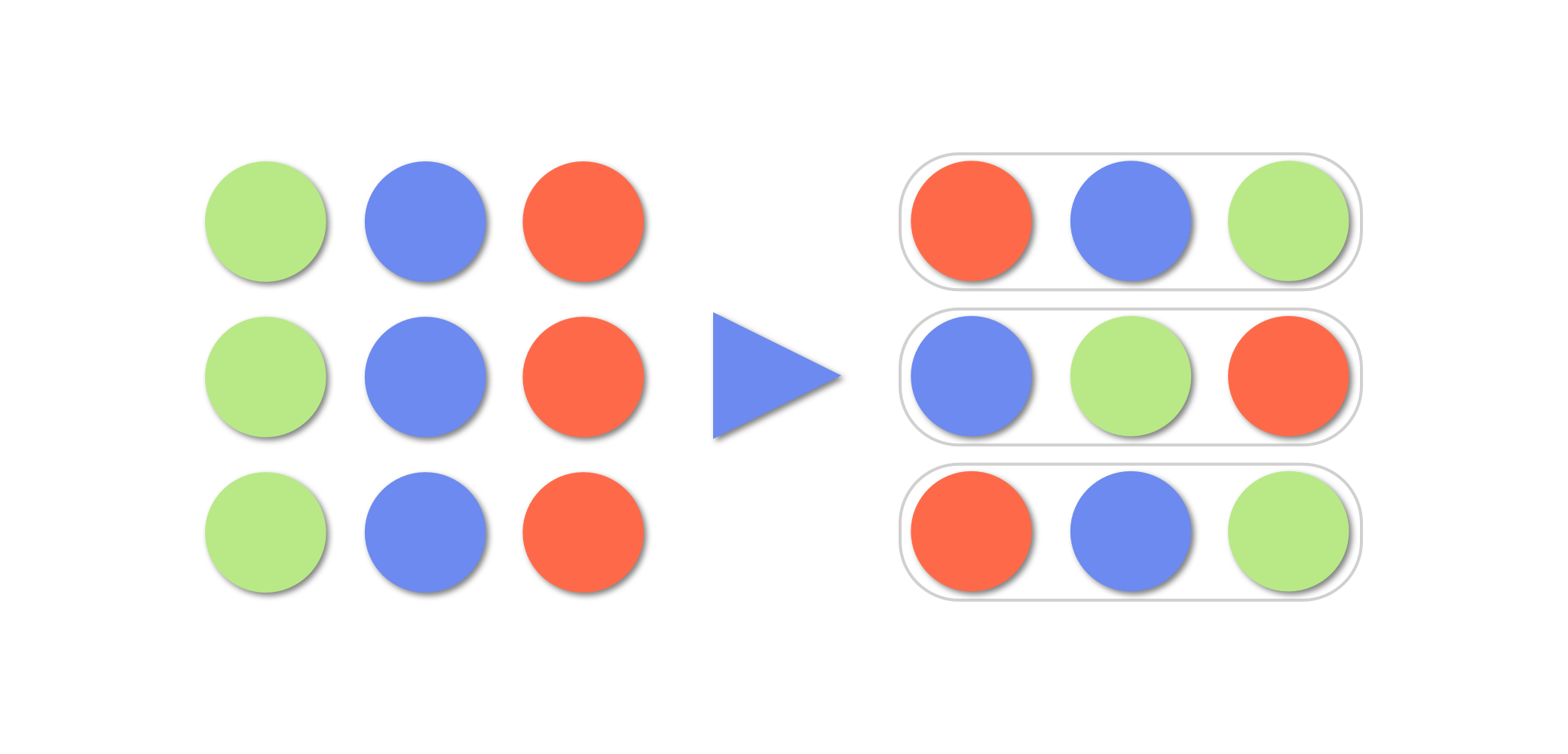A supply-side platform (SSP) is software used by digital publishers to sell ad inventory programmatically to advertisers.
Programmatic advertising enables buyers and sellers to automate the ad buying process. SSPs connect to demand-side platforms (DSPs) to allow potential buyers to buy ad inventory programmatically. SSPs and DSPs work together to facilitate ad buys via a real-time auction.
An SSP caters to the unique needs of publishers and their programmatic advertising strategy. A DSP meets all the requirements for advertisers and agencies buying inventory programmatically. DSPs submit bids to an SSP, and the SSP analyzes those bids in its auction process and selects the winner based on the highest price and other settings that publishers configure.
The platform features of an SSP fulfill the specific needs of publishers, and all of the people working at the company understand the unique demands of a publishing business. Not only are the features and tools designed solely to fit the needs of publishers, but the humans that the publishers interact with will understand publisher-specific requirements and problems.
SSP Features
SSPs provide features and tools that help publishers segment, package, inspect, forecast, enrich and sell their advertising inventory.
To sell inventory programmatically, publishers must first make ad space available on their website or app by sending ad requests to an SSP. Publishers can choose to only offer unsold or remnant inventory by sending an ad request to an SSP following an ad request to their ad server. Alternatively, publishers can allow any buyer to beat the price of a direct ad by calling both an ad server and SSP simultaneously in a process known as header bidding.
An ad request is an HTTP request (just like how you enter a URL in your browser to load a website) or an OpenRTB request. Publishers use ORTB requests for header bidding or more advanced integrations where the pub manages their auctions. An ad request contains all the information and data about the nature of the advertising space up for sale, like:
| Category | Data Point 1 | Data Point 2 | Data Point 3 |
|---|---|---|---|
| Ad Unit | Type (Video / Display) | Size | Above the fold? |
| Device | Operating System | Make | Model |
| User | Cookies | Device ID | IP Address |
The table above only contains a few of the many data points received in an ad request. An SSP uses all these data points to match ad requests to potential bids from advertisers in a real-time auction.
Inventory Management
SSPs provide inventory management tools where publishers can choose which inventory to route to buyers.
Private marketplaces or Deal IDs
If a publisher wants to give a specific buyer or set of buyers access to a segment of inventory, an SSP provides a way to create a private marketplace (also referred to as a PMP or deal).
Publishers use targeting tools to carve out pieces of their inventory to create deals with buyers. Publishers configure targeting settings to filter inventory based on the values passed in all of the various fields received in an ad request.
For example, a publisher can create a "US Sports" vertical by targeting users from the United States that visit all of the domains in a publisher's portfolio that report on or analyze American sports leagues. A publisher would then set a floor price on the deal, which would express the lowest price they will accept in a bid.
When a publisher sets one of these deals live and available, an SSP will create a deal ID that a buyer will target within their DSP to access a publisher's private marketplace.
A deal ID is an alphanumeric value that an SSP passes to a DSP in an ORTB bid request to signify a particular private marketplace. A buyer can plug the deal ID value into the targeting settings within their DSP to target the inventory in the PMP that the deal ID represents.
Open Marketplace
Publishers can also offer their inventory to all buyers connected through their DSPs to an SSP in the open marketplace. In contrast to a private marketplace, the open marketplace opens up a gigantic pool of potential buyers.
Publishers use caution when offering inventory on the open marketplace since potential buyers can also undercut the price offered in private marketplaces if they can find that same inventory for sale in the open market. Undercutting price is why some publishers choose not to place any inventory on the open marketplace.
Auction Resolution
After a publisher sets up their inventory for sale in deals or the open market, one of the core functions of an SSP is to run the auction for every ad request.

When an ad request arrives at an SSP, the platform finds all of the eligible deals or buyers and sends out ORTB bid requests to each of their DSPs. DSPs return ORTB bids along with the price the buyer will pay and the ad to be delivered if they win.

The SSP then chooses a winner by finding the highest price ad along with obeying any other configuration settings put into place like frequency capping, pacing, competitive separation, or ad category blocks (this is only a subset of many possible settings). The SSP then selects a winner and delivers the ad down to the publisher's website or app.
The SSP will also track impressions, clicks, or other reporting events that publishers and buyers want.
SSP Tools
SSPs can also provide tools to publishers to make running a programmatic advertising business easier and more efficient. Some examples of these tools are:
Reporting
All SSP platforms must offer some form of reporting so publishers can gauge the performance of their programmatic advertising partnerships. Reporting can take the form of dashboards, real-time reporting, and ad-hoc reporting (build custom reports yourself).
Forecasting
Forecasting tools give publishers insight into potential future inventory availability and performance. Many buyers want to know how many impressions they can access given a specific set of targeting criteria, and forecasting tools on an SSP can help answer this question.
Bid Inspection
Despite its massive efficiency gains, programmatic advertising can create a complex and intertwined rabbit hole of possibilities. Sometimes answering the simple question of why an ad will not display can baffle even the most seasoned ad ops veteran.
Some SSPs make this process much easier by providing troubleshooting tools that detail the inner workings of the ad auction and selection process. These tools can reveal why an ad will not serve by breaking down incoming ad request values, DSP bids, targeting settings, price configurations, pacing, frequency capping, or whatever of the multitude of settings any particular publisher account can put in place.
Audience Integrations
Many SSPs now offer integrations with various Data Management Platforms (DMPs) so that publishers can enrich their inventory with first or third-party data to make it more valuable to buyers. These integrations would allow publishers to either target, forecast, or report on audience segments.
Audience segments are collections of cookies or device IDs that represent groups of users with a common attribute, like "males", "ages 18-25", or "prospective car buyers". To learn more about DMPs, check out this article:

Fraud Prevention
Offering integrations with fraud prevention companies like DoubleVerify, MOAT, or IAS has become a table-stakes feature for any SSP. These companies specialize in preventing bot traffic or non-viewable ads from ever making it to buyers.
These are only a subset of tools that an SSP can offer prospective publisher clients, although some SSPs make customer support their standout feature. Catering to the specific needs of publishers is a defining characteristic of a supply-side platform.
SSP Customer Support
The employees working at an SSP always hold the interests and success of publishers above all else. SSPs build their platform to serve the unique needs of publishers, so it only makes sense that SSPs train their people to grow the businesses of publishers and help them achieve success.
Account managers at an SSP can assist publishers in implementing a programmatic advertising strategy. They can help publishers carve up and package inventory to sell on the open market or via private marketplaces.
Technical operations personnel can help publishers troubleshoot any issues they face in bringing inventory into the platform, displaying ads, or receiving bids from DSPs.
Some SSPs also provide managed services where the publisher can grant the SSP the right to sell inventory on their behalf to potential buyers. The SSP can either sell the publisher's inventory direct to a buyer or package it up with other publishers on the platform into a curated marketplace accessible via deal IDs.
So in review, an SSP:
- Helps publishers package, manage and sell advertising inventory
- Offers tools and features to help run a programmatic advertising business
- Resolves the real-time auction of advertising inventory
- Guides publishers to grow their business
These are the defining characteristics of an SSP.
Photo by Ruthson Zimmerman on Unsplash



